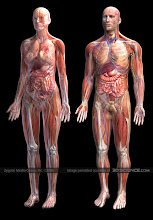“Queer Studies in the House of Anthropology”
Author: Tom Boellstorff
Source: Annual Review of Anthropology 36 (2007): 17-35
The author examines anthropological research on sexuality, focusing on work addressing lesbian women, gay men, and transgendered persons. Since 1993, anthropological work has increased on female nonnormative sexualities (including work on women identifying as “lesbian”), forms of transgenderism, and the study of normative sexualities (women and men identifying as “heterosexual”). Bellstorff explains that the publication of Inventing Lesbian Cultures in America (Lewin 1996) and Female Desires (Blackwood and Wieringa 1999) marked a new phase in the anthropology of female nonnormative sexualities, and that such work has contributed enormously to understandings of how sexualities are shaped by cultural conceptions of female embodiment. Research on forms of transgenderism has also provided important insights into how the broad category “transgender” is lived in particular historical and cultural contexts. In addition to these topics, anthropological work on normative heterosexualities had appeared, addressing topics ranging from romantic love, masculinity, and sexualized female-male relations at work and home. Much of this research was drawn from and inspired by feminist anthropological works. All of these works and research has provided insights on the place of sexuality in the human journey.
“Sexuality, Culture, and Power in HIV/AIDS Research.”
Author: Richard Parker
Source: Annual Review of Anthropology 30 (2001): 163-179
This article examines the development of anthropological research in response to AIDS. Richard Parker begins by clarifying that by the late 1980’s, work by anthropologists began to raise the importance of cultural systems in shaping sexual practices relevant to HIV transmission and prevention. New emphasis was placed on the urgent need for more adequate, current data on the nature of sexual behavior in order to help prevent the spread of HIV and AIDS. Most of these studies aimed to collect data on numbers of sexual partners, frequency of different sexual partners, and previous experience with other sexually transmitted diseases. Parker states that the primary goal was to point the way for prevention policies and intervention programs designed to reduce behaviors associated with increased risk for HIV infection. Since the start of the 1990’s, it has become evident that structural, political, and economic factors shape sexual experience in addition to cultural factors. Parker concludes by saying that although anthropologists were rather slow to respond to the initial impact of the HIV/ AIDS epidemic, their “perspectives have taken a leading role in defining what have been perhaps the most important alternative currents of social research in response to AIDS.”
“Sexuality Studies in Archaeology”
Author: Barbara L. Voss
Source: Annual Review of Anthropology 37 (2008): 317-336
This article discusses the connections between archaeological artifacts and early sexuality aspects of humankind. Barbara Voss says a growing body of archaeological research on sexuality demonstrates that the sexual politics of the past were as richly varied and complex as those of the present. Most research has clustered into five groupings: reproduction management, sexual representations, sexual identities, prostitution, and the sexual politics of institutions. Voss also explains that biological reproduction, which is necessary to the survival of the species, is commonly understood to be one of the most universal, “natural” aspects of human sexuality. However, for most primates, including hominids, reproduction comprises a relatively small aspect of sexual activities and relationships. Because sexual activities include a wide variety of nonreproductive behaviors, “sexuality is more appropriately viewed as a learned source for the exploration of pleasure, power, and sociality.” On a different note, Voss says that there is good evidence that communities in many parts of the world produced various material devices for enhancing or repressing sexual reproduction, from 5,000 BP onward. This included plant-based medicines and tools used in abortions. The journey to uncover more about the sexual past and behaviors of humans and other primates continues and plays a major role in discovering what has or hasn’t changed.
Wednesday, December 9, 2009
Subscribe to:
Post Comments (Atom)

No comments:
Post a Comment